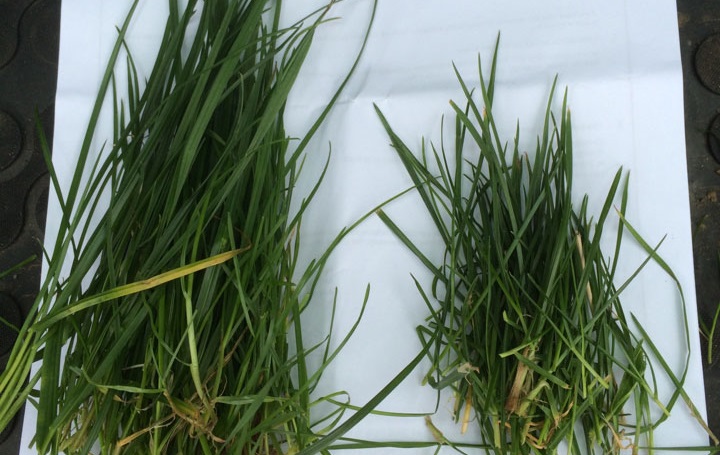
Grass growth regulators based on naturally occurring plant hormones, gibberellic acids such as SmartGrass could provide farmers with an early season growth, allowing lower feed costs, faster grazing rotations, and more silage cuts to be taken throughout the season, says Nufarm’s technical manager for the UK and Ireland, Dick Dyason.
“Now there is a simple to use product that can be sprayed on grassland that will do just that. SmartGrass is a patented formulation of gibberellic acid that enhances the growth rate of grass in the early spring, enabling increased yields for either grazing or silage. I believe that applying SmartGrass (gibberellic acid 3) to grass in the spring could bring big benefits to dairy farmers. Plant growth regulators are widely used in New Zealand where grass is grown as a crop. In New Zealand they farm their grass and their animals and this could be described as a concept of “Grassmanship”,alongside ”Stockmanship” explains Dick Dyason, Technical Manager for Nufarm UK.
Dick explains that gibberellic acid causes cell division and rapid elongation of cell tissue thus boosting grass growth. What you see is taller, lusher grass and increased dry matter. The taller leaves trap more sunlight further enhancing the effect. Applied soon after cutting or grazing SmartGrass enables re-growth to start immediately and this continues rapidly for about 3 weeks.
In the UK there are two main ways to benefit from applying these growth regulators in the spring. The first, in a rotational grazing situation, is to target a shorter rotation by applying SmartGrass to the pasture grazed in the past 3-4 days. Doing this for a full rotation will cover the whole farm. It will enable more paddocks to be shut up (after grazing and spraying) for silage as well as earlier silage cuts and better quality silage.
The second, in a cut and carry situation, is to cut some paddocks early (to reduce ration costs) and apply SmartGrass. This will result in a lower yield on the first cut but an earlier and higher yielding second cut with the potential for an extra cut over the season.
Trials in the UK and New Zealand have shown this added grass growth did not come at the expense of grass quality in terms of protein, sugars, metabolisable energy or mineral content.
Dick Dyason offers advice on getting the most from SmartGrass
• SmartGrass (Gibberellic acid 3) can only be applied to any hectare once in the spring before April 30th
• Apply at dose rate of 20g/ha
• Because it is an acid, it is best sprayed on its own, to avoid any interaction with other products
• Apply at the start of spring growth. The spray window is normally between mid-March to mid-April, depending on locations and weather.
• It should only be used on good quality swards with good fertility. Benefits will only be seen if conditions for active growth exist the so ensure soils are tested and any deficiencies addressed
• They are not a substitute for fertilisers so make sure you have a good nutrient management plan in place.
• Response from a good quality sward will be far higher than from a poor one.
Mr Dyason says that it also likely these growth regulators could benefit sheep and beef grazing systems. Applied in the same way, they could allow a rapid recovery after grazing.
Overall he believes farmers with healthy quality grassland could benefit from incorporating grass regulators into their grass management plan.
“For professional dairy farmers to stay in business, they need to maximise grass growth and this is a way to maximise performance and reduce costs.” he says.
